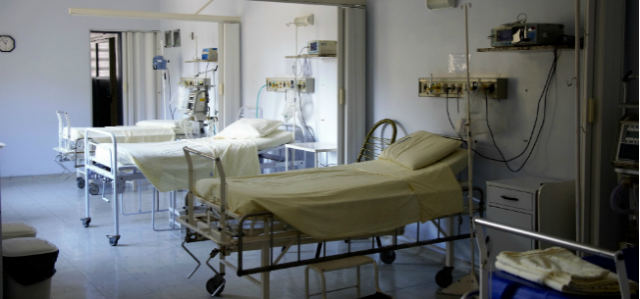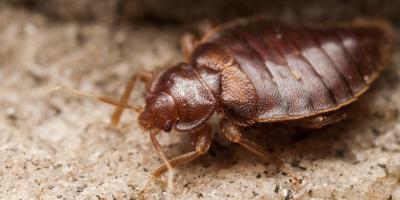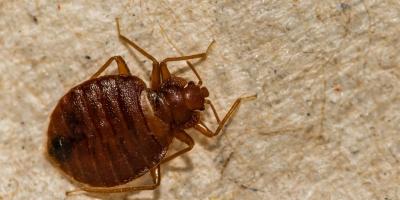Bed Bug Control for Hospitals and Healthcare Facilities

For guests and patients in need of medical care, hospitals, doctors offices, urgent care clinics, and healthcare facilities are meant to be places of healing and care. It’s critical - for both the safety of your patients and your business’s reputation - to ensure guests who come for treatment do not leave with more issues than they came in with. That makes bed bug prevention a hugely important issue for healthcare facilities worldwide.
But for facilities large and small alike, keeping bed bugs out of patient areas and away from guests can pose a uniquely difficult challenge, That’s why healthcare facilities should take strong, proactive steps to minimize bed bug exposure and implement reliable exclusion processes to make sure bed bugs are unable to get a foothold in your business long before they come into contact with those seeking care.
Understand Basic Identifying Features of Bed Bugs
Keeping bed bugs out of your healthcare facility starts with knowing exactly what you are looking for - and that means knowing what bed bugs look like, what they need to thrive, and where they’re most likely to be found.
One of the hardest aspects of identifying bed bugs is being able to recognize them across the different points in their life cycle. While bed bug eggs may be particularly difficult to spot, their early stages - as nymphs, and then as unfed adults - can typically be found along the seam lines of linens and on bedding where patients may be resting.
If bed bugs have been able to feed before being removed, the unfed adults will be easily identified by their large bodies. These are the individuals most likely to then lay eggs and continue the cycle, and so these bed bugs should be quickly identified and removed.
Keep Staff Trained and Ready to Respond
For most facilities, healthcare and housekeeping staff are really the first line of defense in preventing the spread of bedbugs, that’s why it’s critical to make sure your staff are fully trained and updated on not only bed bug identification, but also the latest exclusion and cleaning procedures in play at your facility.
Regular training can be a hugely beneficial addition to your bed bug prevention measures. Be sure to keep your staff up-to-date on everything your facility is doing to stop the spread of bed bugs, and be sure to let staff know they should feel encouraged to bring attention to infestations without fear of reprisals or punishment.
Thoroughly Clean and Inspect Linens Regularly
Bed bugs are most likely to find shelter in the areas most likely to lead to a health source of nutrients. In a healthcare facility, that often means bedding, linens, and patient clothing. That’s why it’s critical to implement regular cleaning and laundry specifically designed to neutralize bed bugs before they get the chance to spread.
In many cases, heat alone will be perfectly effective at eliminating bed bugs, their eggs, and their nymphs. That means that cold laundry practices - while often regarded as more energy-efficient - will simply not be enough to prevent the spread of bed bugs from one batch of laundry to the next. Be sure to utilize high heat when cleaning any linens suspected of harboring bed bugs.
Learn To Identify Likely Bed Bug Sources
Although very difficult to exclude completely - especially with a wide variety of patients coming in and out of your facility every day - bed bugs can be stopped relatively quickly by simply identifying key entry points and taking steps to prevent the spread from that first point of contact.
Take note of patients present symptoms immediately upon entry into your facility, and be sure to direct any patients suspected of carrying bed bugs to a quarantined area where any bed bugs they may be carrying can be safely removed and eliminated before they have the chance to transfer elsewhere. Also, be sure to inspect any incoming laundry or linens that could be harboring bed bugs to prevent the spread through contact with other clean laundry, as this can also be a key source of bed bug transference.
Create And Follow Standard Exclusion Procedures
A major key to keeping bed bugs away from your patients, your staff, and your guests is to implement smart, regular, and recorded exclusion practices. Fortunately, creating and implementing these practices is not difficult - although sticking to them, and training staff, can require a good amount of dedication on the part of the facility operator.
Follow Exclusion and Quarantine Procedures to Prevent The Spread
Basic exclusion principles include identifying likely sources of bed bug entry into your facility, quarantining and treating affected materials to prevent the spread of bed bugs, and keeping staff well-trained and ready to report any infestations as soon as they occur.
For hospitals or facilities facing unique or particularly difficult bed bug challenges, an experienced bed bug professional can help identify unique exclusion practices designed to keep your facility as clear of infestations as possible.
Carefully Track Bed Bug Sightings and Removal Procedures
The best exclusion practices won’t mean much in the long term if they are not studiously recorded and studies for improvements later on. That’s why it’s critical to record every infestation - confirmed, suspected, or otherwise - as soon as they are identified, and to note all exclusion and removal practices undertaken as a result.
By studying these occurrences, you can better prepare your facility for future threats and respond more effectively when the time comes to remove bed bugs from your facility.
Work with an Experienced Bed Bug Removal Specialist
The best way to keep bed bugs from getting a foothold in your healthcare facility is to contact an experienced bed bug exclusion and removal specialist, who can thoroughly assess your property and identify key entry points for bed bugs looking to settle in.
In many cases, an experienced bed bug professional can recommend the best solution for not only removing bed bugs that may currently be affecting your patients, but can also help implement those key preventative strategies to help you save money, reduce effort, and protect patients (and your reputation) from bed bug infestations moving forward.
Bed bugs are a serious issue for healthcare facilities, and should be treated with the utmost caution and seriousness. By responding quickly, thoroughly, and accurately, you can prevent bed bugs from getting comfortable in your facility long before they have the chance to negatively affect your guests.



